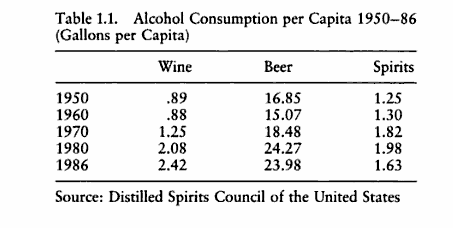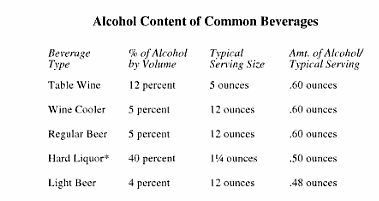Drunk driving is one of the leading causes of death in the United States of America. In 2008 alone, 11773 people were killed due to auto accidents triggered by drivers who drove under the influence of various substances, mainly alcohol (MADD, 2010). In 2002, it was found that Americans behind the wheels had abused alcohol at least 159 million times (MADD, 2010). A large number of drivers who have had their licenses revoked due to prior violations, continue to drive under alcohol influence (MADD, 2010). Indeed, since the time cars have been on the road, regulating the traffic safety aspect by curbing alcohol abuse has been the biggest challenges for various jurisdictions.
Thesis Statement: In this essay, I will highlight various issues surrounding the social problem of drunk driving and examine its causes and consequences. For this, I will assume the position that one of the leading causes for it is the social stigma attached to alcohol-consumption. The aim is to prove that alcohol beverages per se aren’t the real problem but the unnecessary restrictions in place regarding its sale and availability, which forces people to do whatever it takes to purchase and consume alcohol, leading to a rise in drunken driving incidents. If we have to curb alcoholism and the menace of drunk driving incidents, we need to relax the social rules regarding alcohol beverages, removing the stigma attached to them.
The Causes of drunkenness: At an institutional level, drunk driving is a fall-out of the important role played by beverage alcohol in American life and culture. Wherever we go, alcohol consumption has become an integral component of leisure activities and celebrations (Jacobs, 2009, p.1) even though a large cross-section of the population comprises of committed teetotalers or others who abstain from social consumption of alcohol. From cocktail parties to sporting meets, dining outs to christening ceremonies, from fraternity bashes to even charity events, alcohol consumption has become the center-stage of social life for many; a trend which is unlikely to abate anytime soon (Jacobs, 2009, p.1).

The sad part is that these events have often become a flashpoint for people to test their capacity of stretching consumption limits (Shore & Ferrari, 2008, p.12). Apart from their role in causing psychological impairments due to depression, frustration, agony and loneliness, large-scale alcohol consumption triggers an instant melt-down of consciousness which leads to reduced inhibitions, which can cause any extent of damage in the immediate aftermath.

According to recent statistics, nearly 7.2 million American kids have a tendency to binge drink (The Associated Press, 2010) which means an excessive intake of alcohol in the bloodstream over a very short period of time (Shore & Ferrari, 2008, p.34). Out of them, a large percentage comprises of underage drinkers which goes with our previous observations on the growing importance of alcohol in high school learning environments.
Recent studies have shown that the alcohol fever is also catching in fast with middle-schoolers as evidenced in growing popularity of stoner and underaged drinking genre movies such as Superbad which seem to advocate that nothing’s really wrong with consuming alcohol “as long as you don’t hurt anybody” (Jacobs, 2008, p.112). The problem begins when kids lose their temperance and sobriety under alcohol influence despite initial misplaced beliefs that they can handle it quite well (Jacobs, 2008, p.112). Indeed, a culture which puts the premium of “cool” on substance and alcohol abuse is the most prominent factor which has led to the present state of affairs.
The Causes of Drunken Driving: So far, we have outlined the major factors which cause the problem of drunkenness in this country, especially among teenagers. From here, it would be easier to follow the complexities of where the problems of drunk driving originate. The following root causes are identified.
The most important reason behind drunk driving in both teenagers and adults can be attributed to the lack of availability of a driver who will remain sober in these cocktail parties (Taylor & Oberman, 2006, p.131). Although, it is generally recommended and agreed on among participants in one of these binge drinking sessions, as soon as the alcohol starts flowing, people tend to forget their obligations, roles and responsibilities if they happen to be drivers. A common tendency is to underestimate the damaging consequences which may be caused by having even a little trace of alcohol in the bloodstream.
It has been empirically found that even 60 ml of alcohol (equal to two pints) which would otherwise be considered normal intake, can be 10 times more harmful when the person under influence is a driver (Taylor & Oberman, 2006, p.445). Indeed, the tendency among binge drinking participants to overestimate their drinking capacity proves a recipe for disaster when seen on the road from a driver’s perspective. If we are to stomp out the perils of probable accidents due to drivers being drunk at any point of time, we will have to enact swifter and stricter legislation with breath-analyzer tests to ensure drivers do not consume any alcoholic beverages while on the road.
An associated reason behind drunk driving is the lack of use of public transportation and carpooling services. Almost all Americans are behind the wheels which ensures minimal availability of transportation services except in big cities. Even remote suburbs within these city limits are not easily accessible by public transport which lends itself to over-reliance on drivers, many of whom see nothing wrong with being under influence while driving (Taylor & Oberman, 2006, p.711).
Conclusion against Thesis Statement: The main reason for the current spate of alcohol consumption incidents can be attributed to the strong puritanical associations which characterize the American alcohol consumption scene. From a historical point of view, there is a perceived taboo against alcohol consumption due to diktats from the religious Right, anecdotes of events such as the Prohibition era and other governing aspects of our culture, which on one hand, demonize alcohol consumption as a social evil, while on the other hand, turns a blind eye to the everyday violation of those very principles. There’s a clear amount of hypocrisy in this picture.
Most people, especially rebellious teenagers, see through this failed state of affairs which leads to a backlash against governing ethical and moral norms (Shore & Ferrari, 2008, p.108). In countries such as the United Kingdom and Australia, where per capita consumption of alcohol is much higher than the States, the incidence of drunken driving is at a much lower rate (Shore & Ferrari, 2008, p.108). This is due to a lack of demonizing of alcohol as some sort of Biblical vice. There is hardly any equivalent of the Christian Right over there which allows the government to send a more clear and articulate message on why “drinking and driving should not mix” which leads to more people embracing the popular message. This also curbs binge drinking activities.
Indeed, if we have to arrest the phenomena of drunk driving, we need to remove some of the stigmas that come with even moderate consumption of alcohol. Relaxing the current social sanctions against alcohol abuse will desensitize the target audience, especially teenagers to the supposedly enchanting qualities of the beverage. There’s an urgent need to take away the “coolness” factor associated with alcohol consumption. It will also increase the probability to send a strong message to teenagers that while there is no problem at all with social drinking, the two terms “drinking” and “driving” should not mix in any condition.
References
- Jacobs, J.B. (2009). Drunk Driving: An American Dilemma. Chicago, IL: University of Chicago Press.
- Mothers Against Drunk Driving. (2010). Statistics.
- Shore, E.R. & Ferrari, J.R. (2008). Preventing Drunk Driving. Binghamton, NY: The Haworth Press Inc.
- Taylor, L. & Oberman, S. (2006). Drunk Driving Defense. New York, NY: Aspen Publishers.
- The Associate Press. (2010). Study: 7.2 Million US Kids Binge Drink.